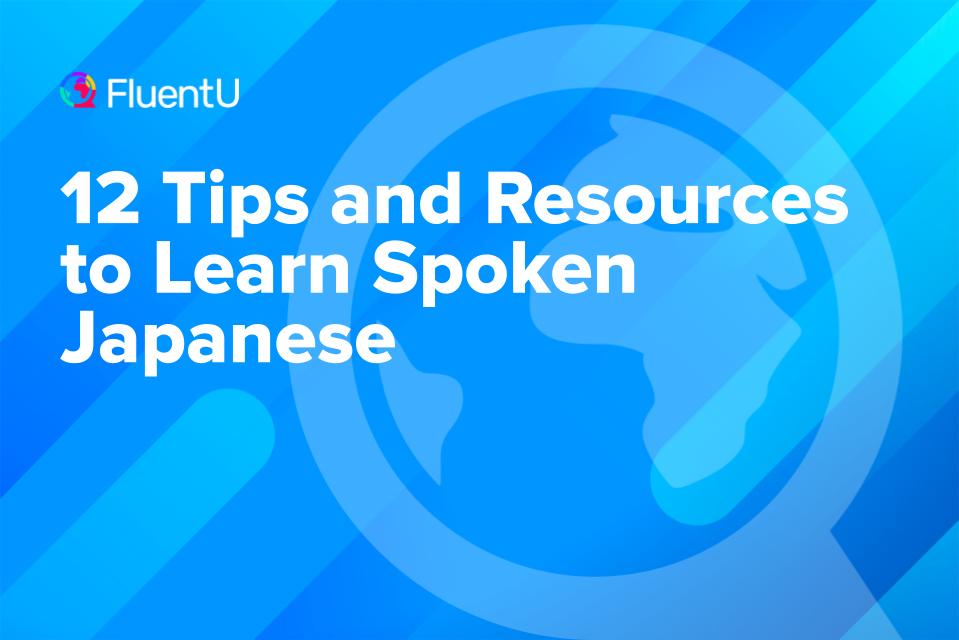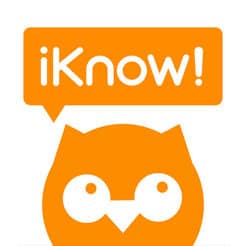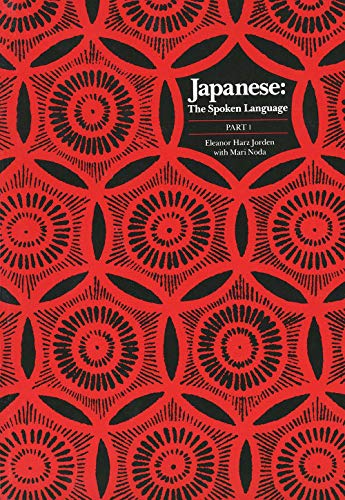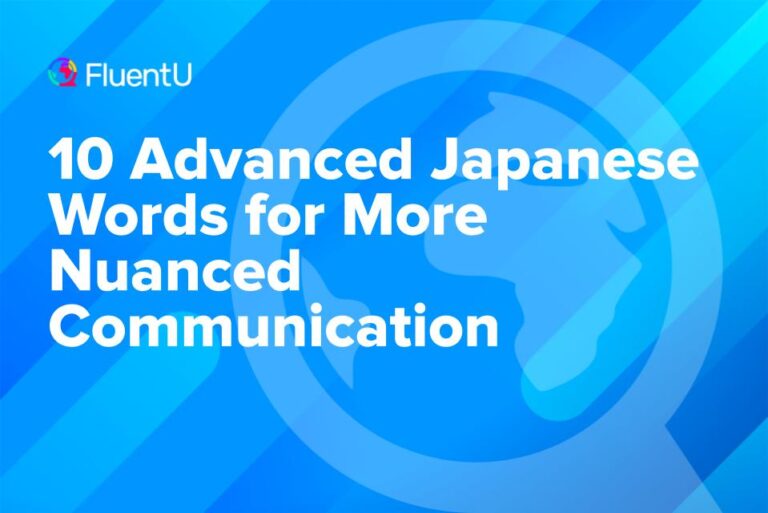12 Tips and Resources to Learn Spoken Japanese

Many Japanese learning programs teach reading and writing along with grammar and speech for a well-rounded learning experience.
But if you’d rather focus on spoken Japanese, we’ve put together a list of the best tips, tricks and resources to get you started on your journey to learning spoken Japanese.
Download: This blog post is available as a convenient and portable PDF that you can take anywhere. Click here to get a copy. (Download)
6 Tips for Learning Spoken Japanese
1. Watch Japanese films and series with English subtitles

Explore streaming websites like YouTube, Crunchyroll, Netflix, Hulu and others to find Japanese films and television shows with English subtitles.
Associating spoken Japanese with the translated English subtitles in real time will help you improve your Japanese listening skills and the speed at which you put words and their meanings together.
2. Follow Japanese YouTubers and watch Japanese videos
What’s better than free content? YouTube is a stellar place to find videos on just about any subject you’re interested in, all over the world.
There are quite a few Japanese YouTubers out there that have gained massive popularity for their entertaining content and watching their videos could help you keep up with listening in Japanese. Just be sure to either put English subtitles on or leave them off if you’re a bit more advanced.
We suggest following:
- President Hajime: A fun channel that posts everything from hidden camera pranks to gaming and silly product reviews. The host speaks very fast so we suggest starting with the captions on.
- Yuka Kinoshita: This super eater can devour copious amounts of food, all while chatting to her viewers in a friendly, familiar way. Watch this one for food terms, examples of how to describe things and more.
- Hikakin TV: Everyday events are made entertaining by this channel, whether it’s giving a cat a bath or eating spicy food. This is a great place to find a mix of different types of vocabulary and sentence constructions.
3. Memorize basic Japanese spoken phrases
This is the best way to get your vocabulary down. If you plan on only speaking Japanese, you’ll need to be able to speak clearly and quickly. The best way to achieve this quickly is by memorizing phrases and words until they become second nature.
You’ll have to study grammar and technical aspects of Japanese language form, of course, but to get right into speaking, we recommend learning a collection of common words and phrases.
Here are a few resources for Japanese learning phrases and vocabulary:
- Learn 80 easy Japanese words and phrases to get you started. Commit these to your memory so you can recognize them when they’re spoken out loud!
- If you’re studying so you can travel, these 20 Japanese travel phrases are a must-know. Click on any linked word to hear its pronunciation.
- Make Forvo your best friend. This resource lets you hear nearly any Japanese word spoken out loud by a native speaker, so if you’re not sure what something sounds like, give it a search here.
4. Listen to Japanese music

Who doesn’t love music? Use Spotify, YouTube, iTunes and other music hotspots to find Japanese singers, songwriters and bands. Since music is so easy to memorize, it can help you remember different vocabulary words in Japanese.
Here are a few suggestions to get you started:
- Kenshi Yonezu: A clear voice and mostly slow pronunciation make this one a great musician to listen to if you’re just a beginner.
- GENERATIONS from EXILE TRIBE: This rock/pop band often includes English subtitles on their songs, so watch their music videos to get a good sense of what the songs are about.
5. Make friends with Japanese speakers
It’s extremely difficult to learn a new language properly without talking to someone else in that language.

Luckily, many Japanese speakers who want to master English are interested in connecting with people just like you for the purpose of a language exchange. Who knows? You may make a new BFF.
You can find native speakers by using local meeting websites like Meetup, but you can also find them online: there are plenty of language exchange websites for Japanese learners.
6. Use Japanese audio flashcards
You always hear about flashcards being great for memorizing written words, but they’re also great for memorizing spoken words. Using audio flashcards in Japanese that focus on mnemonics and active recall as a way to memorize Japanese is the way to go.
Japanese Audio Lessons is one site that provides flashcard lessons with accompanying audio. You need to sign up to access the materials, but to see if this method suits you, one lesson is available for free.
Alternatively, you can take your audio learning on the go with the Learn Japanese Audio Flashcards app, made for Amazon devices.
6 Resources for Learning Spoken Japanese
7. Audiobooks
Audiobooks are awesome for honing in on your Japanese listening skills while chillin’ out at the same time. Just put on a Japanese audiobook and tune in. Be mindful of how the speaker sounds, how they pronounce words and the speed at which they speak.
You can listen to Japanese audiobooks on your morning commute, in the bath, while out for a jog and everywhere in between.
For the most part, any level of learner can benefit from audiobooks in Japanese. However, some content may be a little too complex for brand new beginners to keep up with. Choose a book that’s suitable for your learning level.
8. Rosetta Stone

While the program itself covers the Japanese written language at a minimum, a huge part of the course focuses on listening to and speaking Japanese. The program uses a native Tokyo speaker and is helpful for learning standard pronunciation as well as proper pitch and inflection.
You can even test your own pronunciation against that of the speaker with a specially designed program. Just speak the word or phrase and the program will tell you how closely you matched the speaker’s pronunciation and pitch.
It’s an extremely useful tool for learners who want to focus on speaking and listening to the language!
Any level of learner can use Rosetta Stone, just be sure to purchase the correct experience level before diving in.
9. “Japanese: The Spoken Language”
This handy textbook is an affordable and thorough resource for any Japanese learner.
When used with the accompanying audio and video materials, this book is an incredible piece of work. The series is 100% in romanized Japanese and English, making the focus exclusively on listening, pronouncing, comprehending and speaking Japanese.
Since this book starts at the absolute beginner level, novice and intermediate learners would benefit the most from this resource.
10. FluentU
FluentU Japanese videos are great for learning spoken Japanese because you can associate dialogue in the clips with the accompanying English and romaji subtitles to optimize your pronunciation skills.
The program’s library includes a wide variety of contemporary videos featuring native Japanese speakers. This means you’ll be able to experience modern Japanese as it’s spoken today in a variety of contexts, such as music videos, commercials, inspirational talks and more.
Every video is equipped with interactive captions in English and Japanese, which provide you with contextual definitions without leaving the video. You can toggle these on or off to fit your needs and save new words to personalized flashcards.
Personalized, multimedia quizzes help you study new words from your flashcard list as well as after each video.
11. iKnow! Japanese

“Learn a language now. Remember it forever.” That’s the slogan of this program. Feeling skeptical? Try their software and app out through five sessions for free.
The iKnow program focuses on the memorization aspect of learning a language. While you’ll need to use another resource to help with Japanese comprehension and grammar, iKnow will enable you to memorize Japanese vocabulary quickly and easily.
The program teaches the core 6,000 most commonly used words in Japanese, and it does so by letting you know the optimal time to learn something new or review something you already learned in the past.
Their product’s interface is very user-friendly and pleasant to look at, too. What do you have to lose?
12. My Kikitori

Simply select a lesson, listen to the audio clips a few times, then take the quiz. Once you’re comfortable with your quiz score, move on to the next lesson. It’s a simple and effective way to learn with audio.
If the audio is too fast for you, a slowed-down version is available for you to practice with until you’re confident enough to move up to normal speed.
Is It Possible to Only Learn Spoken Japanese?
Wouldn’t it be great if simple questions always had simple answers? This one’s harder to answer than it seems, and many Japanese learners are heavily divided on the topic.
On one hand, you could just learn spoken Japanese if you plan on briefly visiting Japan and firmly believe that you won’t need to be able to read or write in order to get around.
Your reason for learning might be strictly to meet and communicate with Japanese speakers verbally, so you don’t want to spend any time learning a new writing system.
On the other hand, you could see that as nearly impossible. If you’re traveling, at some point you’ll need to be able to read things, such as traffic signs, maps, building names, etc.
You might not always be able to speak to your friends in person or using your voices, and a text or a written message may be necessary.
It seems to some that Japanese writing is inextricable from Japanese speaking.
In any case, you don’t have to pick a side. Maybe you want to learn spoken Japanese first before diving into learning hiragana, kanji and romaji. There’s nothing wrong with that and many Japanese learners start out just learning pronunciation and listening skills.
In short, true fluency involves all aspects of the language, including speaking, listening, reading, writing and grammar.
Even if you decide to not pursue Japanese writing or reading, you’ll at least be able to develop your speaking and listening skills after following this guide.
Happy studies and don’t forget to practice your listening and speaking skills daily!
Download: This blog post is available as a convenient and portable PDF that you can take anywhere. Click here to get a copy. (Download)










